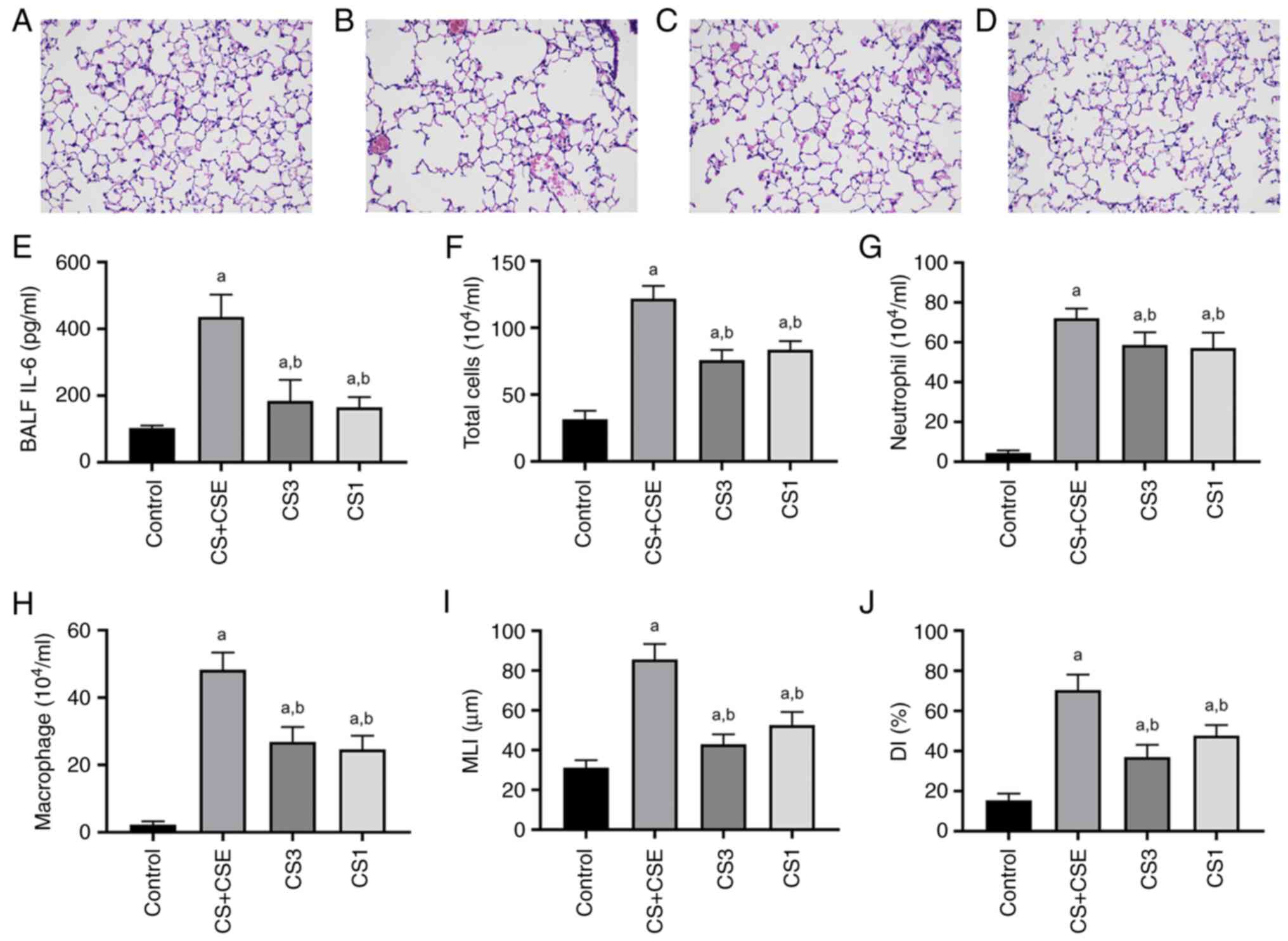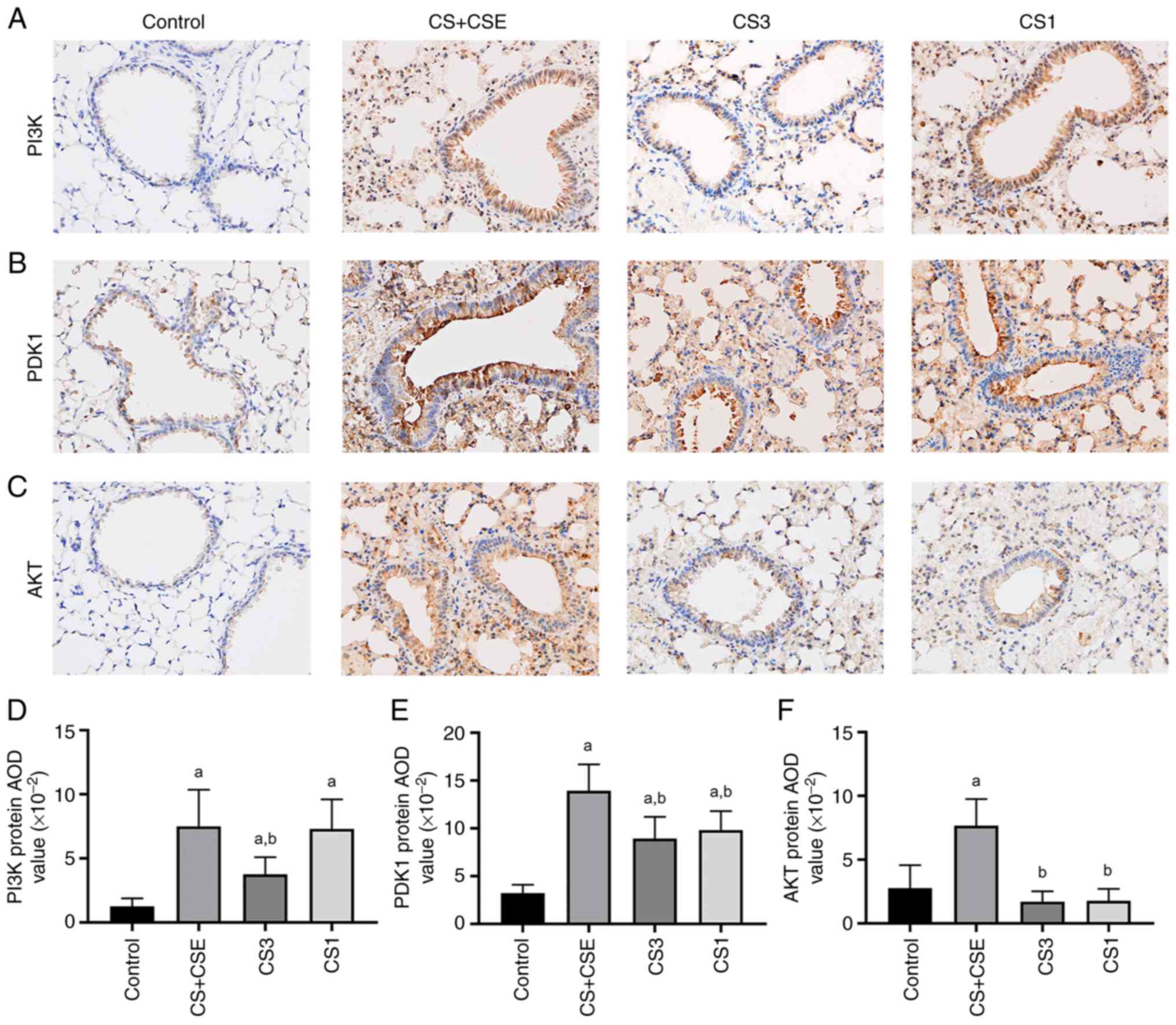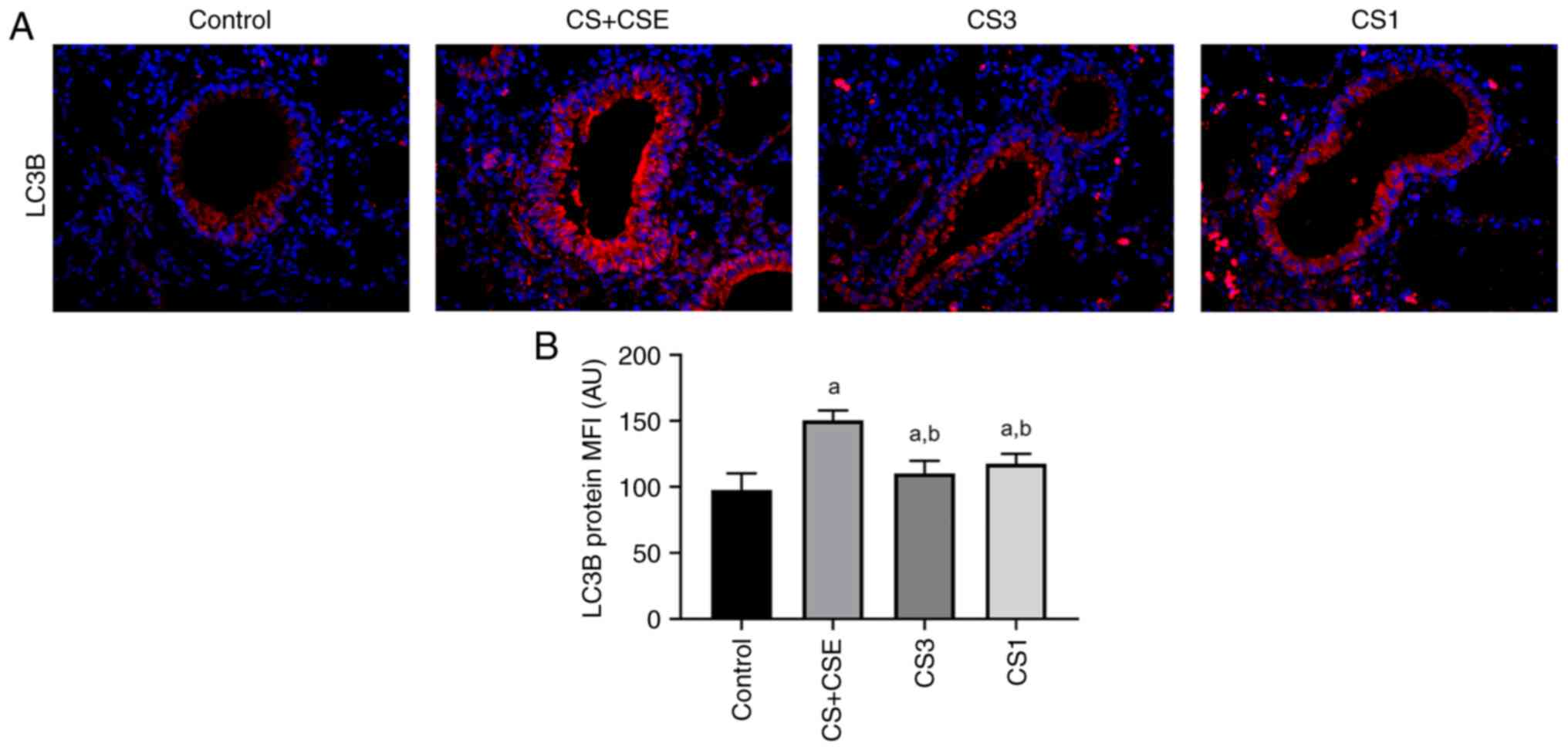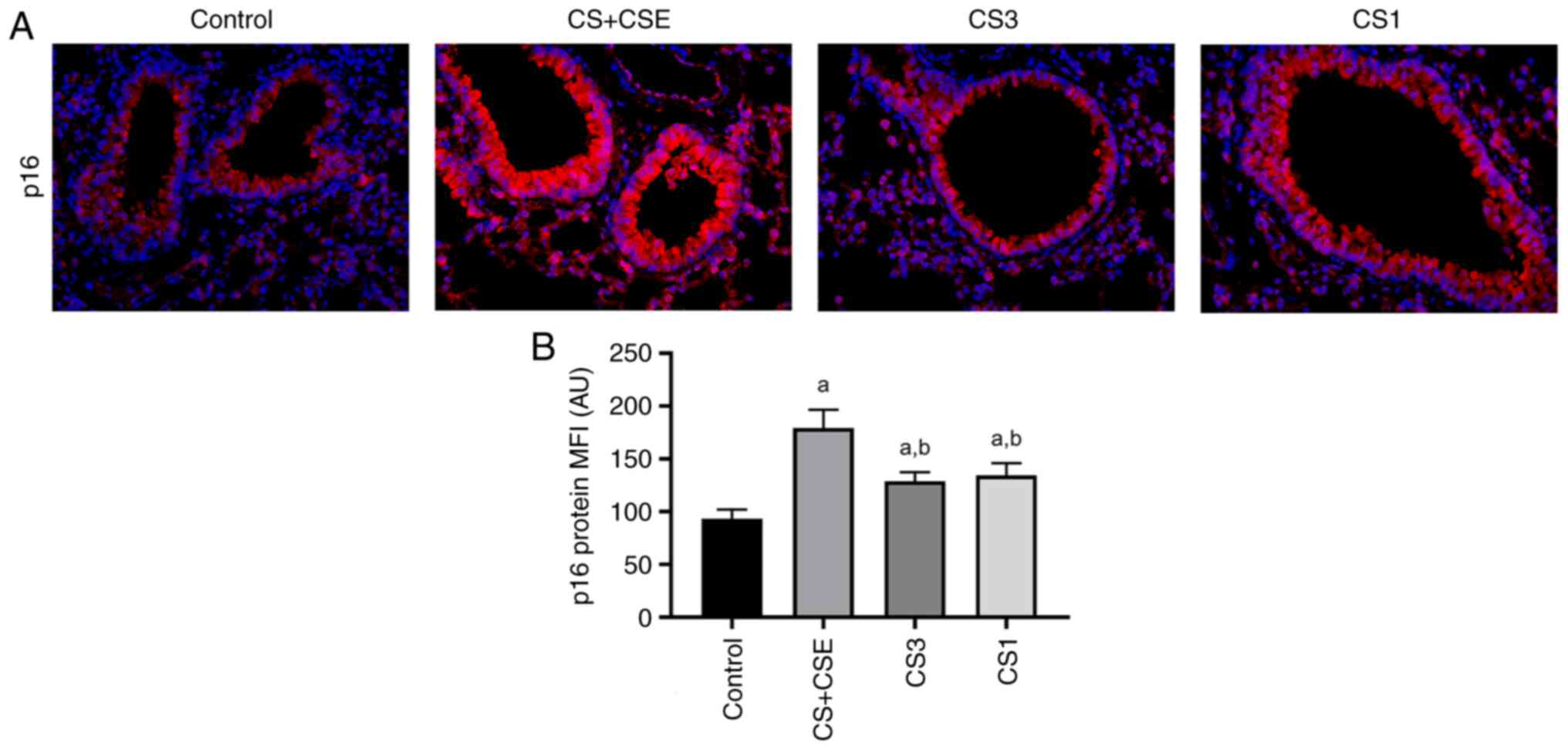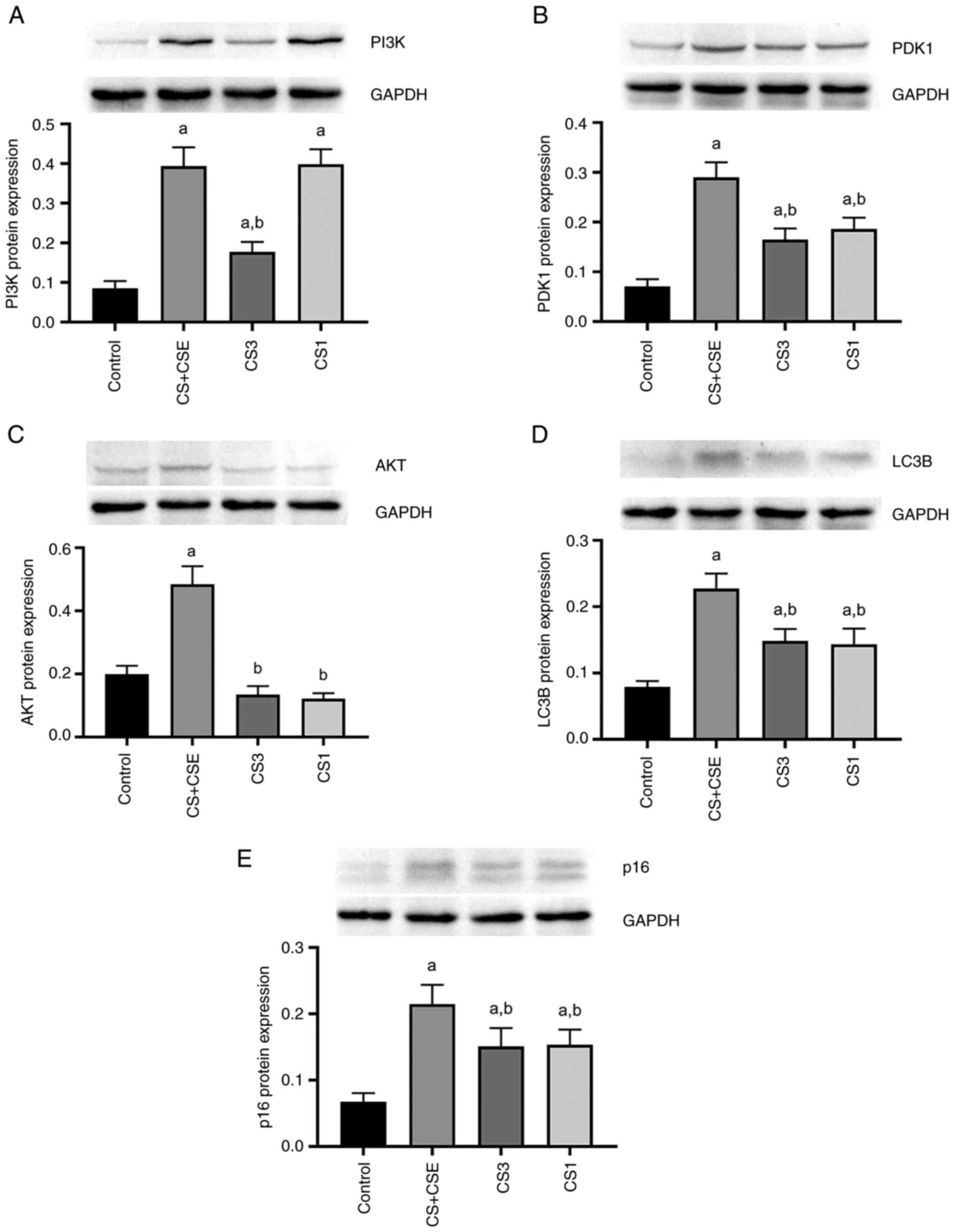|
1
|
Vij N, Chandramani-Shivalingappa P, Van
Westphal C, Hole R and Bodas M: Cigarette smoke-induced autophagy
impairment accelerates lung aging, COPD-emphysema exacerbations and
pathogenesis. Am J Physiol Cell Physiol. 314:C73–C87.
2018.PubMed/NCBI View Article : Google Scholar
|
|
2
|
Janssen R, Piscaer I, Franssen FME and
Wouters EFM: Emphysema: Looking beyond alpha-1 antitrypsin
deficiency. Expert Rev Respir Med. 13:381–397. 2019.PubMed/NCBI View Article : Google Scholar
|
|
3
|
Bodas M and Vij N: Augmenting autophagy
for prognosis based intervention of COPD-pathophysiology. Respir
Res. 18(83)2017.PubMed/NCBI View Article : Google Scholar
|
|
4
|
Bodas M, Van Westphal C,
Carpenter-Thompson R, K Mohanty D and Vij N: Nicotine exposure
induces bronchial epithelial cell apoptosis and senescence via ROS
mediated autophagy-impairment. Free Radic Biol Med. 97:441–453.
2016.PubMed/NCBI View Article : Google Scholar
|
|
5
|
Barile E, De SK and Pellecchia M: PDK1
inhibitors. Pharm Pat Anal. 1:145–163. 2012.PubMed/NCBI View Article : Google Scholar
|
|
6
|
Alessi DR, James SR, Downes CP, Holmes AB,
Gaffney PR, Reese CB and Cohen P: Characterization of a
3-phosphoinositide-dependent protein kinase which phosphorylates
and activates protein kinase Balpha. Curr Biol. 7:261–269.
1997.PubMed/NCBI View Article : Google Scholar
|
|
7
|
Wu N, Zhu Y, Xu X, Zhu Y, Song Y, Pang L
and Chen Z: The anti-tumor effects of dual PI3K/mTOR inhibitor
BEZ235 and histone deacetylase inhibitor Trichostatin A on inducing
autophagy in esophageal squamous cell carcinoma. J Cancer.
9:987–997. 2018.PubMed/NCBI View Article : Google Scholar
|
|
8
|
Zhang F, Ma H, Wang ZL, Li WH, Liu H and
Zhao YX: The PI3K/AKT/mTOR pathway regulates autophagy to induce
apoptosis of alveolar epithelial cells in chronic obstructive
pulmonary disease caused by PM2.5 particulate matter. J Int Med
Res. 48(300060520927919)2020.PubMed/NCBI View Article : Google Scholar
|
|
9
|
Joassard OR, Amirouche A, Gallot YS,
Desgeorges MM, Castells J, Durieux AC, Berthon P and Freyssenet DG:
Regulation of Akt-mTOR, ubiquitin-proteasome and autophagy-lysosome
pathways in response to formoterol administration in rat skeletal
muscle. Int J Biochem Cell Biol. 45:2444–2455. 2013.PubMed/NCBI View Article : Google Scholar
|
|
10
|
Wang Y, Liu J, Zhou JS, Huang HQ, Li ZY,
Xu XC, Lai TW, Hu Y, Zhou HB, Chen HP, et al: MTOR suppresses
cigarette smoke-induced epithelial cell death and airway
inflammation in chronic obstructive pulmonary disease. J Immunol.
200:2571–2580. 2018.PubMed/NCBI View Article : Google Scholar
|
|
11
|
Barnes PJ: Mechanisms of development of
multimorbidity in the elderly. Eur Respir J. 45:790–806.
2015.PubMed/NCBI View Article : Google Scholar
|
|
12
|
Johnson SC, Rabinovitch PS and Kaeberlein
M: mTOR is a key modulator of ageing and age-related disease.
Nature. 493:338–345. 2013.PubMed/NCBI View Article : Google Scholar
|
|
13
|
Koukourakis MI, Kalamida D, Giatromanolaki
A, Zois CE, Sivridis E, Pouliliou S, Mitrakas A, Gatter KC and
Harris AL: Autophagosome proteins LC3A, LC3B and LC3C have distinct
subcellular distribution kinetics and expression in cancer cell
lines. PLoS One. 10(e0137675)2015.PubMed/NCBI View Article : Google Scholar
|
|
14
|
Chen ZH, Lam HC, Jin Y, Kim HP, Cao J, Lee
SJ, Ifedigbo E, Parameswaran H, Ryter SW and Choi AM: Autophagy
protein microtubule-associated protein 1 light chain-3B (LC3B)
activates extrinsic apoptosis during cigarette smoke-induced
emphysema. Proc Natl Acad Sci USA. 107:18880–18885. 2010.PubMed/NCBI View Article : Google Scholar
|
|
15
|
Sundar IK, Rashid K, Gerloff J, Li D and
Rahman I: Genetic ablation of p16INK4a does not protect against
cellular senescence in mouse models of chronic obstructive
pulmonary disease/emphysema. Am J Respir Cell Mol Biol. 59:189–199.
2018.PubMed/NCBI View Article : Google Scholar
|
|
16
|
He S, Li L, Sun S, Zeng Z, Lu J and Xie L:
A novel murine chronic obstructive pulmonary disease model and the
pathogenic role of microRNA-21. Front Physiol.
9(503)2018.PubMed/NCBI View Article : Google Scholar
|
|
17
|
Zieglowski L, Kümmecke AM, Ernst L, Palme
R, Weiskirchen R, Talbot SR and Tolba RH: Assessing the severity of
laparotomy and partial hepatectomy in male rats-A multimodal
approach. PLoS One. 16(e0255175)2021.PubMed/NCBI View Article : Google Scholar
|
|
18
|
Nemzek JA, Xiao HY, Minard AE, Bolgos GL
and Remick DG: Humane endpoints in shock research. Shock. 21:17–25.
2004.PubMed/NCBI View Article : Google Scholar
|
|
19
|
Cai S, Chen P, Zhang C, Chen JB and Wu J:
Oral N-acetylcysteine attenuates pulmonary emphysema and alveolar
septal cell apoptosis in smoking-induced COPD in rats. Respirology.
14:354–359. 2009.PubMed/NCBI View Article : Google Scholar
|
|
20
|
Zhang XY, Zhang C, Sun QY, Li D, Luo RR,
Wan ZF, Ye XW, Liu WJ, Rao SS and Han J: Infliximab protects
against pulmonary emphysema in smoking rats. Chin Med J (Engl).
124:2502–2506. 2011.PubMed/NCBI
|
|
21
|
Lee H, Park JR, Kim WJ, Sundar IK, Rahman
I, Park SM and Yang SR: Blockade of RAGE ameliorates
elastase-induced emphysema development and progression via
RAGE-DAMP signaling. FASEB J. 31:2076–2089. 2017.PubMed/NCBI View Article : Google Scholar
|
|
22
|
Lu J, Xie L, Liu C, Zhang Q and Sun S:
PTEN/PI3k/AKT regulates macrophage polarization in emphysematous
mice. Scand J Immunol. 85:395–405. 2017.PubMed/NCBI View Article : Google Scholar
|
|
23
|
Lin L, Hou G, Han D, Yin Y, Kang J and
Wang Q: Ursolic acid alleviates airway-vessel remodeling and muscle
consumption in cigarette smoke-induced emphysema rats. BMC Pulm
Med. 19(103)2019.PubMed/NCBI View Article : Google Scholar
|
|
24
|
Bayascas JR: PDK1: the major transducer of
PI3-kinase actions. Curr Top Microbiol Immunol. 346:9–29.
2010.PubMed/NCBI View Article : Google Scholar
|
|
25
|
Lin JX, Xie XS, Weng XF, Qiu SL, Yoon C,
Lian NZ, Xie JW, Wang JB, Lu J, Chen QY, et al: UFM1 suppresses
invasive activities of gastric cancer cells by attenuating the
expres7sion of PDK1 through PI3K/AKT signaling. J Exp Clin Cancer
Res. 38(410)2019.PubMed/NCBI View Article : Google Scholar
|
|
26
|
Kaneda MM, Messer KS, Ralainirina N, Li H,
Leem CJ, Gorjestani S, Woo G, Nguyen AV, Figueiredo CC, Foubert P,
et al: PI3Kγ is a molecular switch that controls immune
suppression. Nature. 539:437–442. 2016.PubMed/NCBI View Article : Google Scholar
|
|
27
|
Parzych KR and Klionsky DJ: An overview of
autophagy: Morphology, mechanism, and regulation. Antioxid Redox
Signal. 20:460–473. 2014.PubMed/NCBI View Article : Google Scholar
|
|
28
|
Mizumura K, Maruoka S, Shimizu T and Gon
Y: Autophagy, selective autophagy, and necroptosis in COPD. Int J
Chron Obstruct Pulmon Dis. 13:3165–3172. 2018.PubMed/NCBI View Article : Google Scholar
|
|
29
|
Wirawan E, Vanden Berghe T, Lippens S,
Agostinis P and Vandenabeele P: Autophagy: for better or for worse.
Cell Res. 22:43–61. 2012.PubMed/NCBI View Article : Google Scholar
|
|
30
|
Barnes PJ, Baker J and Donnelly LE:
Cellular senescence as a mechanism and target in chronic lung
diseases. Am J Respir Crit Care Med. 200:556–564. 2019.PubMed/NCBI View Article : Google Scholar
|
|
31
|
Sorrentino JA, Krishnamurthy J, Tilley S,
Alb JG Jr, Burd CE and Sharpless NE: p16INK4a reporter mice reveal
age-promoting effects of environmental toxicants. J Clin Invest.
124:169–173. 2014.PubMed/NCBI View
Article : Google Scholar
|
|
32
|
Najafov A, Sommer EM, Axten JM, Deyoung MP
and Alessi DR: Characterization of GSK2334470, a novel and highly
specific inhibitor of PDK1. Biochem J. 433:357–369. 2011.PubMed/NCBI View Article : Google Scholar
|
|
33
|
Lamming DW, Ye L, Sabatini DM and Baur JA:
Rapalogs and mTOR inhibitors as anti-aging therapeutics. J Clin
Invest. 123:980–989. 2013.PubMed/NCBI View Article : Google Scholar
|
|
34
|
Ito K, Caramori G and Adcock IM:
Therapeutic potential of phosphatidylinositol 3-kinase inhibitors
in inflammatory respiratory disease. J Pharmacol Exp Ther. 321:1–8.
2007.PubMed/NCBI View Article : Google Scholar
|
|
35
|
Council NR: Guide for the care and use of
laboratory animals: Eighth Edition. Washington, DC, The National
Academies Press 246, 2011.
|















